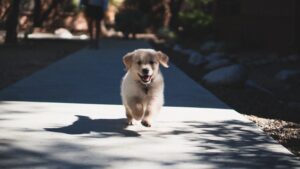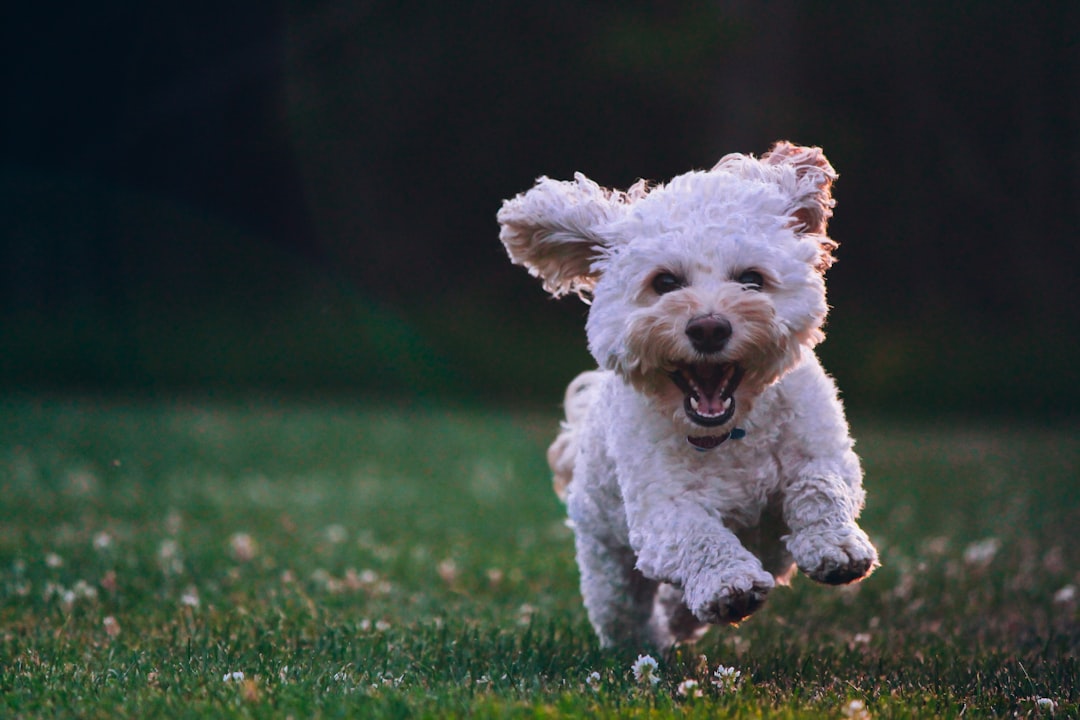Potty Training Pups: The Ultimate Guide to Housebreaking Your Puppy
A comprehensive guide to housebreaking a puppy, including effective techniques, common issues, and night-time toilet training tips, to ensure a reliable and well-behaved adult dog.
Understanding the Basics of Housebreaking
When it comes to housebreaking a puppy, it’s essential to emphasize the significance of researching and planning in advance to ensure an effective training process. This means understanding the specific needs and behaviors of the puppy’s breed, as well as taking into account individual characteristics and learning history. For instance, certain breeds may have specific tendencies or temperaments that can influence the approach to potty training. By researching and planning in advance, pet owners can tailor their training methods to the unique requirements of their puppy, increasing the likelihood of successful housebreaking.
In addition to research and planning, it’s important to have an overview of tried-and-true methods for housebreaking, such as crate training, paper training, and indoor potty training. Each of these techniques comes with its own set of considerations and benefits, and understanding these methods can help pet owners make informed decisions about which approach to take based on their puppy’s individual needs. For example, crate training can be particularly effective for puppies due to their den instincts, providing them with a safe and secure space to learn bladder control and establish a routine for outdoor potty breaks. By having a comprehensive understanding of these methods, pet owners can choose the most suitable approach for housebreaking their puppy, setting the stage for a successful training journey.
Understanding the Basics of Housebreaking
Embarking on the journey of housebreaking a puppy requires a comprehensive understanding of the fundamentals. Thorough research and advanced planning are essential to ensure an effective and successful training process. It is crucial to familiarize yourself with the various tried-and-true methods such as crate training, paper training, and indoor potty training. Each of these methods has its unique benefits and can be tailored to suit the specific needs of the puppy and its owner.
For instance, crate training capitalizes on a dog’s natural den instincts, providing a safe and secure space for the puppy to learn bladder control and develop a sense of routine. On the other hand, paper training and indoor potty training might be more suitable for individuals who live in high-rise apartments or areas with limited outdoor access. Understanding the basics of these housebreaking methods allows puppy owners to make informed decisions based on their living situations, work schedules, and the individual needs of their furry companions.
In addition to these training methods, it’s important to consider the puppy’s age, breed, and personality when choosing a housebreaking approach. For example, certain breeds may respond better to crate training due to their natural inclination towards creating a den-like environment, while others might thrive with a consistent indoor potty training routine. By understanding the basics of housebreaking and the individual factors that come into play, puppy owners can set the stage for a successful and tailored training experience for their new furry family member [1, 4].
 Effective Techniques for Potty Training
Effective Techniques for Potty Training
When it comes to potty training a puppy, consistency is key. Establishing a consistent schedule for potty breaks, regulating the puppy’s diet, and ensuring regular exercise are fundamental aspects that contribute to successful potty training. For example, taking the puppy outside to the designated potty area after meals, naps, and playtime can help in reinforcing the routine and teaching the puppy the appropriate times for bathroom breaks.
In addition to scheduling, leveraging crates as a valuable tool for potty training can be highly effective. Dogs are den animals and seek out a little canine cave for security, which makes crates a natural choice for housebreaking. For instance, using the crate to teach the puppy to “hold it” and providing a controlled space for the puppy to rest and sleep can aid in instilling discipline and routine in the puppy’s toilet habits. When the puppy is not in the crate, close supervision is necessary to prevent accidents and to quickly guide the puppy to the designated potty area.
Moreover, while puppy pads and paper training methods can be utilized, it is crucial to be mindful of the potential confusion they may cause. For example, using puppy pads inside the house may inadvertently teach the puppy that it’s acceptable to go potty indoors, potentially leading to accidents in other areas of the home. Therefore, it’s important to approach these methods with careful consideration and to monitor the puppy’s progress closely to ensure they are learning the desired potty habits [1, 2].
Implementing a Successful Potty Training Routine
When implementing a successful potty training routine, it is crucial to observe and supervise the puppy to understand their signals and rhythms. For example, puppies often display specific behaviors such as circling or sniffing when they need to go potty. By closely observing these cues, pet owners can proactively take the puppy outside, thereby reducing the likelihood of accidents indoors.
In addition to observation and supervision, controlling the puppy’s diet is an essential aspect of successful potty training. By regulating the puppy’s food and water intake, pet owners can predict when the puppy is likely to need a potty break, allowing them to preemptively take the puppy outside at the appropriate times. Moreover, using praise and rewards as positive reinforcement for exhibiting proper potty behavior outdoors can significantly encourage the puppy to continue the desired toilet habits [1, 2]. For instance, immediately praising the puppy and offering a small treat after they successfully go potty outside reinforces the association between the behavior and a positive outcome, encouraging the puppy to repeat this behavior. These techniques contribute to building a strong foundation for successful potty training and help the puppy understand where they should relieve themselves.
 Addressing Common Housebreaking Issues
Addressing Common Housebreaking Issues
When it comes to housebreaking a puppy, it’s essential to be prepared for potential challenges that may arise during the training process. One of the most common issues is accidents inside the house, which can be frustrating for both the puppy and the owner. However, it’s important to understand that accidents are a natural part of the learning curve, especially for young and inexperienced puppies. Instead of getting frustrated, it’s crucial to address these accidents calmly and patiently.
Additionally, some puppies may exhibit resistance or difficulty in understanding the concept of potty training. In such cases, seeking guidance from a veterinarian or professional trainer can be immensely helpful. These experts can provide valuable insights into the specific challenges the puppy is facing and offer tailored solutions to address them effectively. Moreover, their expertise can help in identifying any underlying medical issues that may be impacting the puppy’s ability to grasp the housebreaking process.
Furthermore, the duration of puppy potty training is not a one-size-fits-all scenario. Factors such as the puppy’s age, previous learning experiences, the methods used for training, and the consistency of the training approach all play a significant role in determining the duration of the training process. By understanding and acknowledging these factors, owners can set realistic expectations and adapt their training strategies to align with the individual needs of their puppy. This adaptability and attentiveness to the unique circumstances of each puppy can contribute to a more effective and successful housebreaking journey [1, 2].
Night-time Toilet Training and Additional Considerations
When it comes to night-time toilet training, it’s essential to recognize the unique challenges it presents. Puppies have smaller bladders and may not have full control over their bladder muscles during the night, making accidents more likely. For a complete guide to puppy potty training, click here. To address this, pet owners should establish a routine that includes taking the puppy outside for one last potty break just before bedtime to minimize the chances of accidents. Additionally, it’s crucial to understand that different breeds and individual puppy personalities can influence the duration of night-time toilet training. For example, smaller breeds often have higher metabolism rates, leading to more frequent potty needs during the night, while some puppies may be more anxious and take longer to adjust to holding their bladder through the night.
Consistency is key in night-time toilet training. By maintaining a regular schedule for potty breaks, pet owners can help puppies establish a natural rhythm for their nighttime needs. This means being patient and understanding that accidents may occur initially, but with persistence and positive reinforcement, puppies can learn to hold their bladder until the designated morning potty break. It’s important to avoid scolding or punishment for accidents during the night, as this can create anxiety and confusion in the puppy, hindering the training process. Instead, focus on providing encouragement and rewards when the puppy successfully goes potty outside during the night, reinforcing the desired behavior and fostering a positive association with nighttime toileting.
 Conclusion: Ensuring a Reliable and Well-Behaved Adult Dog
Conclusion: Ensuring a Reliable and Well-Behaved Adult Dog
Consistency is key when it comes to housebreaking a puppy. By establishing a routine that includes regular potty breaks, positive reinforcement, and close supervision, pet owners can set their puppies up for success in the long run. For example, taking the puppy outside after meals, naps, and playtime can help them associate these activities with potty breaks, making it easier for them to understand when and where they should relieve themselves.
Additionally, the role of positive reinforcement cannot be overstated. When the puppy successfully goes potty outside, giving them a high-value treat, verbal praise, or a favorite toy can help reinforce the desired behavior. This positive association encourages the puppy to continue the good behavior, making them more likely to repeat it in the future.
Furthermore, it’s important to address any accidents or setbacks with patience and understanding. Accidents are a natural part of the learning process, and reacting with anger or punishment can lead to confusion and anxiety in the puppy. Instead, calmly clean up the accident using an enzymatic cleaner to remove the smell and refocus on the established routine to prevent future accidents. By maintaining a patient and positive approach, pet owners can effectively guide their puppies through the housebreaking process, ultimately leading to a reliable and well-behaved adult dog [2, 3, 4].


 Book Appointment
Book Appointment